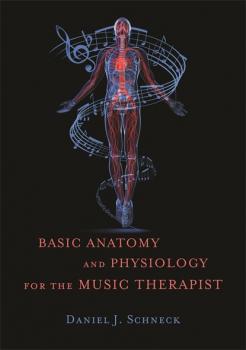Daniel J. Schneck
Список книг автора Daniel J. SchneckBasic Anatomy and Physiology for the Music Therapist
Providing need-to-know information about the human body for music therapists, this book covers the elements of anatomy and physiology that are of particular relevance to clinical practice. Addressing both the structure and function of the human body, the material is presented with the music therapist in mind. Particular attention is paid to the role of music in affecting responses from the organ systems, including the senses, the endocrine glands, the immune system, the musculo-skeletal system, the nervous systems and the vestibular system. Dr Schneck also uses accessible musical metaphors to explain complex biological information. Emphasising the symbiotic relationship between music and the body, this book reveals how an understanding of this relationship can help music therapists to practice more effectively, and will be of interest to students and practitioners alike.
The Music Effect
Music is well known to have a significant effect on physiology and is widely used as an effective therapeutic tool in stress and pain management, rehabilitation, and behavior modification, but its effects are not well understood. This book explains what 'music' is, how it is processed by and affects the body, and how it can be applied in a range of physiological and psychological conditions. Rhythm, melody, timbre, harmony, dynamics, and form, and their effects on the body are explored in detail, helping practitioners create effective therapy interventions that complement other treatment systems. Case studies and evidence from research and practice show how music therapy can benefit people with autistic spectrum disorders, Down syndrome, schizophrenia, and sensory difficulties, among other conditions. The Music Effect is an essential resource for music therapists, clinicians, educators and anyone with an interest in holistic therapy.

